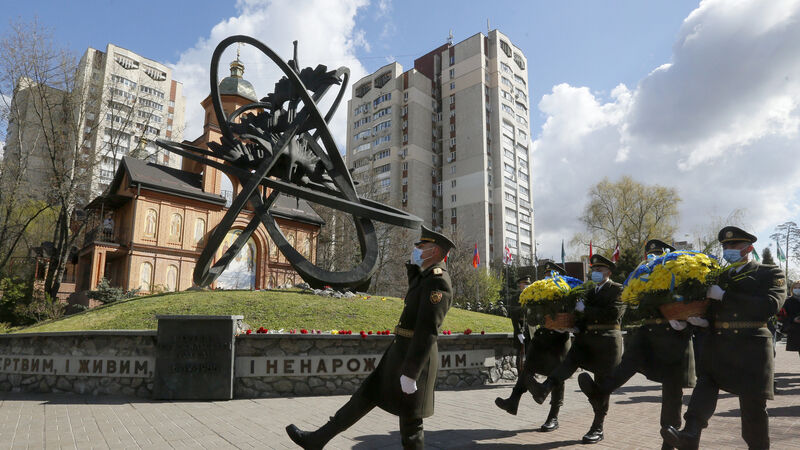Ukraine opens new nuclear waste site at Chernobyl

Ukraine’s president has unveiled a new nuclear waste repository at Chernobyl, the site of the world’s worst nuclear disaster 35 years ago.
Volodymyr Zelenskyy visited Chernobyl with Rafael Mariano Grossi, director general of the International Atomic Energy Agency, and vowed to “transform the exclusion zone, as Chernobyl is referred to, into a revival zone”.
“Ukraine is not alone, it has wide support (from its) partners,” Mr Zelenskyy said. “Today the new repository has been put into operation and it is very important that today a licence to maintain the new repository will be obtained.”
Today marks the 35th anniversary of the #Chernobyl nuclear accident. This documentary from our archives may look outdated, but it tells an important story – a story of international collaboration and support following the accident. https://t.co/ZIrQKODDAi
— IAEA - International Atomic Energy Agency ⚛️ (@iaeaorg) April 26, 2021
Ukrainian authorities decided to use the deserted zone around the Chernobyl plant to build a place where Ukraine could store its nuclear waste for the next 100 years.
The ex-Soviet nation has four nuclear power plants operating and has to transport its nuclear waste to Russia. The new repository will allow the government to save up 200 million dollars (£144 million) a year.
Mr Grossi tweeted that the IAEA “will continue working tirelessly in addressing decommissioning, radioactive waste and environmental remediation related with Chernobyl accident”.
Reactor No 4 at the Chernobyl power plant, 65 miles north of Ukraine’s capital Kyiv, exploded and caught fire deep in the night on April 26 1986, shattering the building and spewing radioactive material into the sky.
Thorough discussion w/ #Ukraine's Prime Minister @Denys_Shmyhal on safeguards, way forward for cooperation in #Chernobyl, nuclear's role for #ClimateGoals. Just yesterday, nuclear energy supplied 67% of electricity produced in the country. @IAEAorg continues ready to support 🇺🇦! pic.twitter.com/qpfp4FfeBi
— Rafael Mariano Grossi (@rafaelmgrossi) April 26, 2021
Soviet authorities made the catastrophe worse by failing to tell the public what had happened — although the nearby plant workers’ town of Pripyat was evacuated the next day, the two million residents of Kyiv were not informed despite the fallout danger.
The world learned of the disaster only after heightened radiation was detected in Sweden.
More than 600,000 people took part in fighting the consequences of the disaster, and 30 died on the first day.
Eventually, more than 100,000 people were evacuated from the vicinity and the 1,000-square-mile exclusion zone was established where the only activity was workers disposing of waste and tending to a hastily built sarcophagus covering the reactor.

Radiation continued to leak from the reactor building until 2019, when it was covered by an enormous arch-shaped shelter.
On the 35th anniversary of the disaster on Monday, Ukrainian authorities declassified documents showing that serious accidents occurred at the power plant several times before April 26 1986.
Ukraine’s Security Service revealed that the Soviet authorities issued a decree on July 8 1986, classifying all details of the Chernobyl disaster, including the number of people getting sick.
According to the agency, in October 1987 a French journalist tried to take soil and water samples abroad, but the KGB swapped his samples with clean ones.










